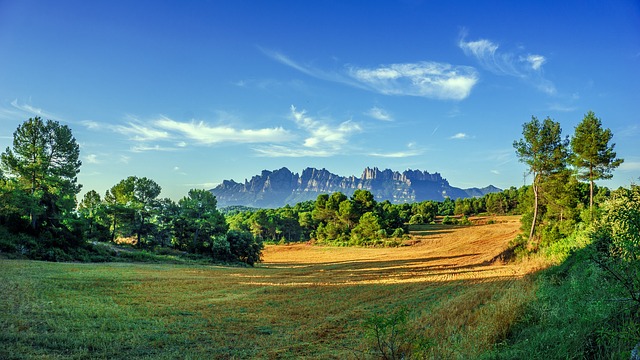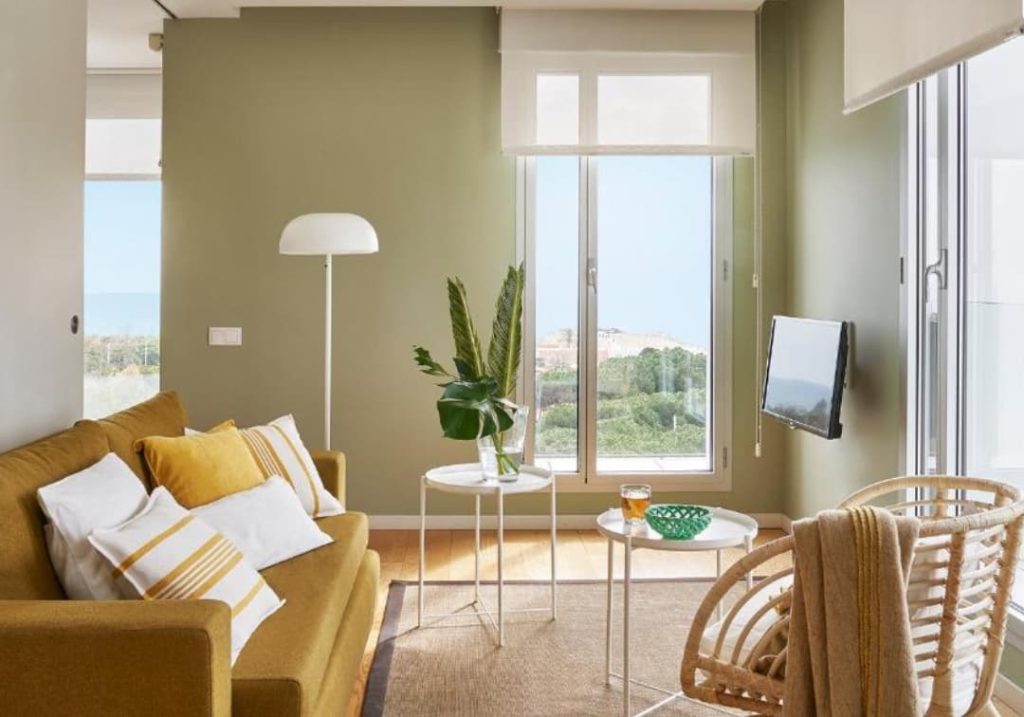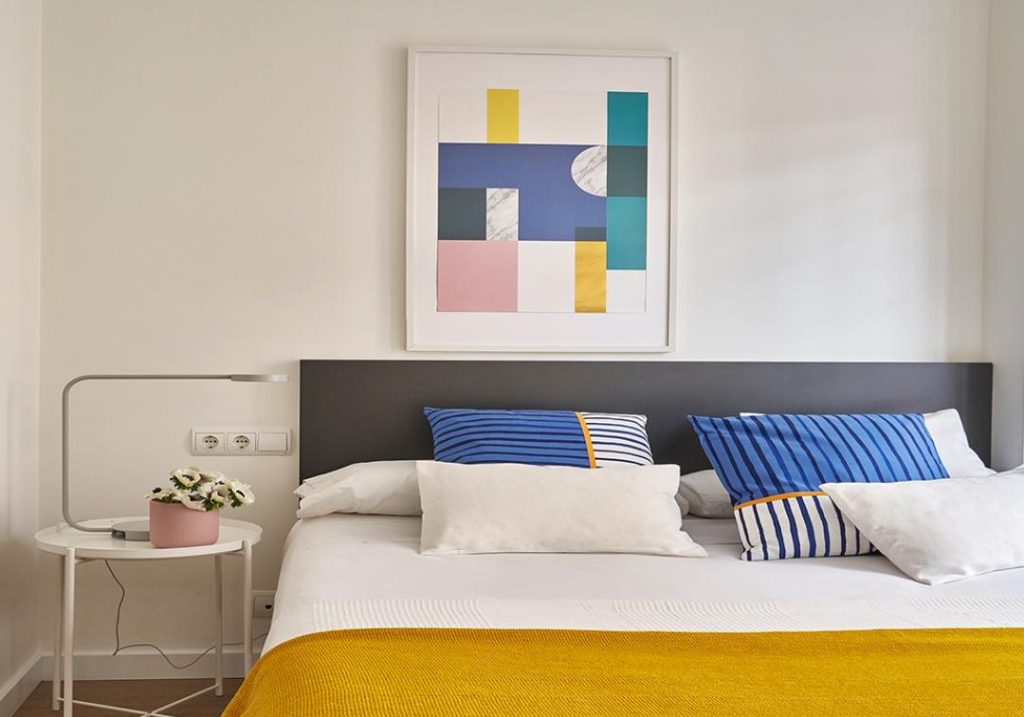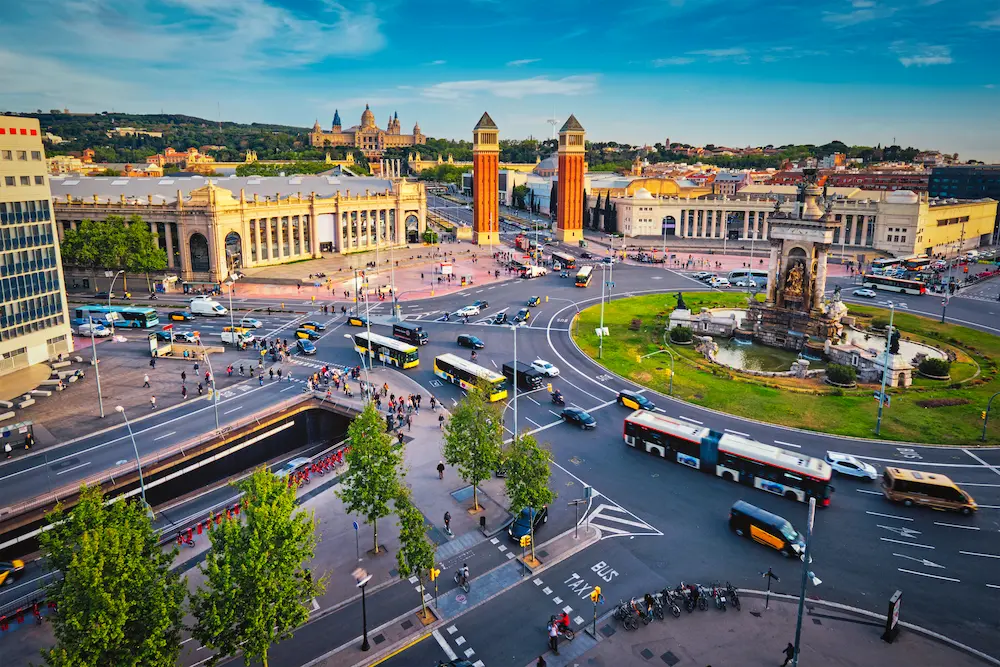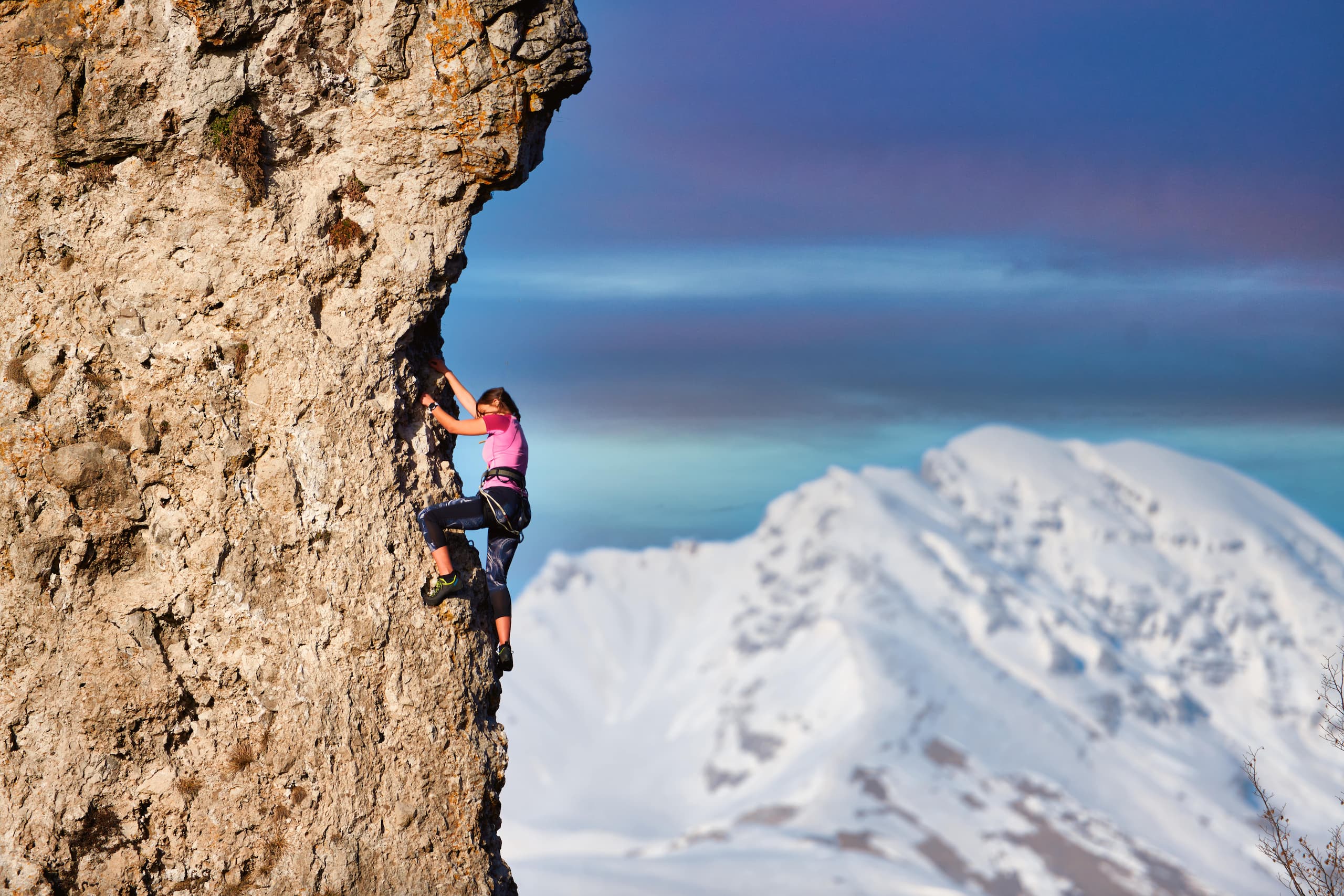Strengthening the faith, exercising, traveling, finding oneself, having time for meditation, meeting people from other countries, facing a new challenge… There are many reasons to take your backpack with you and set out on a voyage by foot, by bicycle or even on horseback along one of the most famous cultural routes in the world: The Way of Saint James or Camino de Santiago, inscribed on the World Heritage List by UNESCO in 1993 and 1998.
The origin of this way goes back to 812 AD, when the hermit Pelayo found the burial site of James the Greater, in Galicia, in northwestern Spain. Although being controversial —some scholars believe that the tomb belonged to Priscillian, a Galician bishop died c. 385—, this discovery led to the construction of a church around the tomb in the current town of Santiago de Compostela. It was the beginning of a pilgrimage way that attracted people from all over the world, who started to go there since 921 AD to get the plenary indulgence (forgiveness for their sins) from Saint James. Only in 2017, the number of pilgrims who arrived in Santiago de Compostela exceeded 301,000 people, 8.3% more than the previous year.
Nowadays, there is not a single Jacobean route, but a wide range of ways that start in several places of Spain and the rest of Europe. One of them is the province of Barcelona, in which the so-called Catalan Way (or Camino Catalán, in Spanish) begins. What about doing the Way of Saint James from Barcelona?
STAGES OF THE CATALAN WAY IN BARCELONA
Since 1992, the Catalan Way from Barcelona starts at the Montserrat monastery. This is because Caesarean, its founder and its first abbot, was the first known pilgrim from Catalonia in Santiago de Compostela (he arrived there in 959 AD).
The route, which is about 199 miles (320 km) long, goes through the province of Lleida before entering the Monegros desert, in Aragon, and finishes in the small village of Pina de Ebro, where the road meets the Ebro Way (or Camino del Ebro).
Would you like to join this adventure? If so, find out how to get to the Montserrat monastery and how to make the most of your visit to these impressive sacred mountains. Once there, go to the Pastoral Coordination Centre —the phone number is (+34) 93 877 77 66— and ask for accommodation at the pilgrim hostel. So, you will be able to start your pilgrimage the day after in the early morning. Now, we are going to summarize what are the stages of the Catalan Way in the province of Barcelona. Pay attention!
Stage 1: Montserrat-Igualada (17 miles – 27.2 km)
The first stage of the Catalan Way, which is a medium difficulty road, goes through the Bruc and the villages of Sant Pau de la Guàrdia and Castellolí —where you will find El Centre hostel, whose telephone number is (+34) 93 808 40 00—, and finishes in the industrial town of Igualada, the capital of the ‘comarca’ (county) of Anoia. Once there, take advantage of your stay visiting the main local spots, such as the Font Major doorway, the Leather Museum or the traditional neighborhood of El Rec. The pilgrim hostel is located at 47 Prat de la Riba Street and its telephone number is (+34) 93 804 55 15. However, if you prefer to go back to Barcelona city, you can do it by train (there is a stop of the Ferrocarrils de la Generalitat de Catalunya, FGC) or by bus.
Stage 2: Igualada-La Panadella (13.6 miles – 22 km)
This medium difficulty stage runs through the villages of Sant Genís, Jorba —where you will find a hostel, whose telephone number is (+34) 93 809 41 01—, Santa Maria del Camí and Porquerisses. The last part is the most demanding one, as you must go up La Panadella, a 2,329-feet-high (710 m) hill that splits the basins of the Llobregat and Segre rivers. After this small effort, visit the remains of the Panadella tower, which was built in the 19th century.
Stage 3: La Panadella-Tàrrega (17.8 miles – 28.6 km)
The third day of pilgrimage, the Way reaches the province of Lleida. As you will see, this is a low difficulty route. Before arriving in Cervera —the capital of the ‘comarca’ of La Segarra, which is well-known for its university and for being the birthplace of the Spanish Grand Prix motorcycle road racer Marc Márquez—, you will enjoy one of the most amazing landscapes of the Jacobean route in Catalonia. In the valley of Ondara, you will go through beautiful and peaceful paths, while discovering villages like Pallerols, Sant Antolí i Vilanova, Hostalets, Sant Pere dels Arquells and Vergós. At the end, you will be able to stroll around Tàrrega, a town that holds an important theatre festival every year.
From there, the rest of the Catalan Way is almost flat before reaching the town of Lleida, whose Seu Vella Cathedral deserves your attention. The remaining stages are the following: Tàrrega-El Palau d’Anglesola (14.3 miles – 23.1 km), El Palau d’Anglesola-Lleida (15.3 miles – 24.6 km), Lleida-Fraga (20.3 miles – 32.7 km), Fraga-Candasnos (16.4 miles – 26.4 km), Candasnos-Bujaraloz (12.8 miles – 20.6 km), Bujaraloz-Pina de Ebro (23.5 miles – 37.9 km) and Pina de Ebro-El Burgo de Ebro (14.5 – 23.4 km). In all these stages, and although it is strongly recommended taking a travel guide or a map app with you, it will be enough if you follow the yellow arrows painted on roads, fences and trees all along the Way of Saint James.
WHERE CAN YOU GET THE PILGRIM PASSPORT IN BARCELONA?
To do any of the Saint James Way’s routes, it is mandatory to have the pilgrim’s passport, a credential that you must stamp at least once a day in any of the villages and towns you visit (or twice, for the walking days take place in Galicia), to sleep in pilgrim hostels. In addition, this will be one of the most beautiful memories of this experience and, if you are brave enough to arrive in Santiago, it will entitle you to get the ‘Compostelana’, a diploma that certifies that you achieved the end goal of your pilgrimage. To receive your ‘Compostelana’, the Santiago Cathedral requires a minimum of two stamps per day during the last 62.1 miles (100 km) for pilgrims on foot or horseback, and during the last 124.2 miles (200 km) for cyclists.
In Barcelona city, you can buy your credential for €2 here:
- Associació d’Amics dels Pelegrins a Santiago. This association has its office in the Centre Cívic Casinet d’Hostafrancs (53 Rector Triadó Street). You can get your passport there on non-holiday Wednesdays from 8:00 p.m. to 9:30 p.m. The email is amicsdelspelegrins@gmail.com, and the phone number, (+34) 635 655 194.
- Archbishopric of Barcelona. Located at 5 Bisbe Street, it is open from 9:00 a.m. to 1:00 p.m., from Monday to Friday. Telephone number: (+34) 93 270 10 10.
- Saint James church. You will find it at 28 Ferran Street, and it opens from 10:00 a.m. to 2:00 p.m. and 5:00 p.m. to 8:00 p.m. on working days. Phone number: (+34) 93 302 22 89.
- Church of the Sant Pau del Camp monastery. It is at 101 Sant Pau Street and it opens from Monday to Friday from 10:30 am to 12:30 pm and from 3:30 pm to 6:30 pm, and on Saturdays, from 9:30 am to 12:30 am. Telephone number: (+34) 93 441 00 01.
Before going to any of these venues, you should make a call or drop an email in advance to ask about the timetable and the availability of passports, as sometimes they run out of them.
WHAT SHOULD YOU BRING IN YOUR BAG TO DO THE WAY OF SAINT JAMES?
One of the main advantages of doing the Way of Saint James is the experience itself, as it forces you to value the little things. The bag you will take with you, which is essential for your pilgrimage, will help you to prioritize what really matters. To give you a hand with your backpack before starting the Catalan Way, we recommend you not to forget any of these items:
- 2 or 3 items of underclothing (you will be able to wash them in hostels)
- 2 or 3 shirts and pairs of trousers
- a pair of comfortable and waterproof walking boots
- a pair of bath slippers
- a pair of resting shoes
- a microfiber towel
- a sleeping bag
- a flashlight (pilgrims wake up very early, even before the sun rises, to avoid the hottest hours)
- A water bottle
- Band-aid, pharmacy alcohol and analgesics
- Sun cream
- Safety pins or clips to hang your washed clothes
- Soap or detergent for clothes
- At least €30 euros for every walking day
Just a final tip: remember that, to avoid back pain, the backpack should not weigh more than about 10 percent of your body weight in kilos.
To rest properly before this challenge, nothing better than booking one of our holiday apartments in Barcelona. Relax on the seafront of this destination, one of the most visited cities in Europe, and enjoy all the amenities you deserve. You will not regret it!
Do you prefer a shorter walk in your next getaway? Check out the best hiking routes in Barcelona.
Have you already done the Way of Saint James? In this case, we invite you to share your experience with us.
¡Buen Camino!
